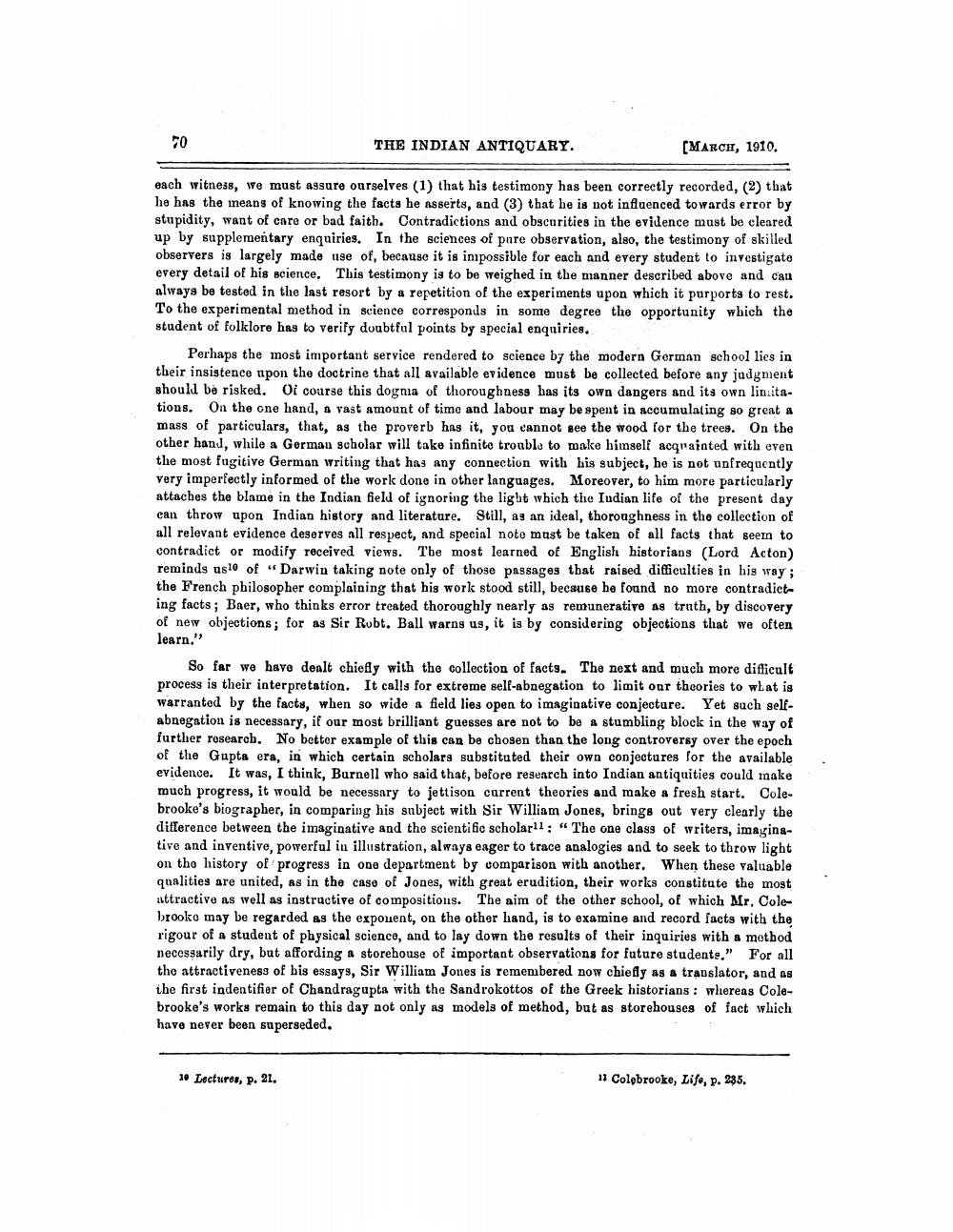________________
70
THE INDIAN ANTIQUARY.
[MARCH, 1910.
each witness, we must assure ourselves (1) that his testimony has been correctly recorded, (2) that he has the means of knowing the facts he asserts, and (3) that he is not influenced towards error by stupidity, want of care or bad faith. Contradictions and obscurities in the evidence must be cleared up by supplementary enquiries. In the sciences of pare observation, also, the testimony of skilled observers is largely made use of, because it is impossible for each and every student to investigate every detail of his science. This testimony is to be weighed in the manner described above and can always be tested in the last resort by a repetition of the experiments upon which it purports to rest. To the experimental method in science corresponds in some degree the opportunity which the student of folklore has to verify doubtful points by special enquiries.
Perhaps the most important service rendered to science by the modern German school lies in their insistence upon the doctrine that all available evidence must be collected before any jadgment should be risked. Oi course this dogma of thoroughness bas its own dangers and its own lin:itations. On the one hand, a vast amount of time and labour may be spent in accumulating so great a mass of particulars, that, as the proverb has it, you cannot see the wood for the trees. On the other hand, while a German scholar will take infinite trouble to make himself acqrainted with even the most fugitive German writing that has any connection with his subject, he is not unfrequently very imperfectly informed of the work done in other languages. Moreover, to him more particularly attaches the blame in the Indian field of ignoring the light which the Indian life of the present day can throw upon Indian history and literature. Still, as an ideal, thoroughness in the collection of all relevant evidence deserves all respect, and special note must be taken of all facts that seem to contradict or modify received views. The most learned of English historians (Lord Acton) reminds us10 of "Darwin taking note only of those passages that raised difficulties in his way; the French philosopher complaining that his work stood still, because be found no more contradicting facts; Baer, who thinks error treated thoroughly nearly as remunerative as truth, by discovery of new objections; for as Sir Robt. Ball warns us, it is by considering objections that we often learn."
So far we have dealt chiefly with the collection of facts. The next and much more difficult process is their interpretation. It calls for extreme self-abnegation to limit our theories to what is warranted by the facts, when so wide a field lies open to imaginative conjecture. Yet such selfabnegation is necessary, if our most brilliant guesses are not to be a stumbling block in the way of further research. No better example of this can be chosen than the long controversy over the epoch of the Gupta era, in which certain scholars substituted their own conjectures for the available evidence. It was, I think, Burnell who said that, before research into Indian antiquities could make much progress, it would be necessary to jettison current theories and make a fresh start. Colebrooke's biographer, in comparing his subject with Sir William Jones, brings out very clearly the difference between the imaginative and the scientific scholarll: “The one class of writers, imaginative and inventive, powerful in illustration, always eager to trace analogies and to seek to throw light on the history of progress in one department by comparison with another. When these valuable qualities are united, as in the case of Jones, with great erudition, their works constitute the most attractive as well as instructive of compositions. The aim of the other school, of which Mr. Colebrooke may be regarded as the expouent, on the other hand, is to examine and record facts with the rigour of a student of physical science, and to lay down the results of their inquiries with a method necessarily dry, but affording a storehouse of important observations for future students." For all the attractiveness of bis essays, Sir William Jones is remembered now chiefly as a translator, and as ihe first indentifier of Chandragupta with the Sandrokottos of the Greek historians: whereas Colebrooke's works remain to this day not only as models of method, but as storehouses of fact which have never been superseded.
10 Lectures, p. 21.
11 Colebrooke, Lifo, p. 235.




